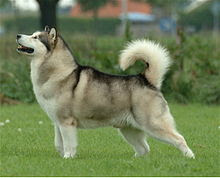Height: 61-71cm (24-28in)
Weight: 25-34kg (55-75lb)
Life experience: 12-14 years
Origin: Ireland
Description: An elegant setter, with a long muzzle, and a fairly long, silky, chestnut-colored coat. The chest, underside, legs and tail are well feathered., but the hair on the head is short. The ears are long and pendant.
Also known as the Irish Red Setter, and perhaps more commonly as the Red Setter, this breed is easily recognized and distinguished from other setters by its luxuriant, chestnut coat. it was developed during the 18th and 19th centuries from a variety of spaniel, setter and pointer breeds, including the Irish Water Spaniel and Gordon Setter, and is an excellent hunting dog, which is most commonly used to point, flush and retrieve game birds, over a variety of terrain. however, in addition to working as a gundog, the Irish Setter has also been used in search and rescue, and as a guide dog for the blind, and is a popular show dog and family companion. on account of its energy and independent nature, the Irish Setter can be slightly more difficult to train than some other setter breeds, and requires a great deal of exercise, but this breed can excel at competative obedience, and makes a rewarding pet.
Weight: 25-34kg (55-75lb)
Life experience: 12-14 years
Origin: Ireland
Description: An elegant setter, with a long muzzle, and a fairly long, silky, chestnut-colored coat. The chest, underside, legs and tail are well feathered., but the hair on the head is short. The ears are long and pendant.
Characteristics of Irish Setter:
Also known as the Irish Red Setter, and perhaps more commonly as the Red Setter, this breed is easily recognized and distinguished from other setters by its luxuriant, chestnut coat. it was developed during the 18th and 19th centuries from a variety of spaniel, setter and pointer breeds, including the Irish Water Spaniel and Gordon Setter, and is an excellent hunting dog, which is most commonly used to point, flush and retrieve game birds, over a variety of terrain. however, in addition to working as a gundog, the Irish Setter has also been used in search and rescue, and as a guide dog for the blind, and is a popular show dog and family companion. on account of its energy and independent nature, the Irish Setter can be slightly more difficult to train than some other setter breeds, and requires a great deal of exercise, but this breed can excel at competative obedience, and makes a rewarding pet.


